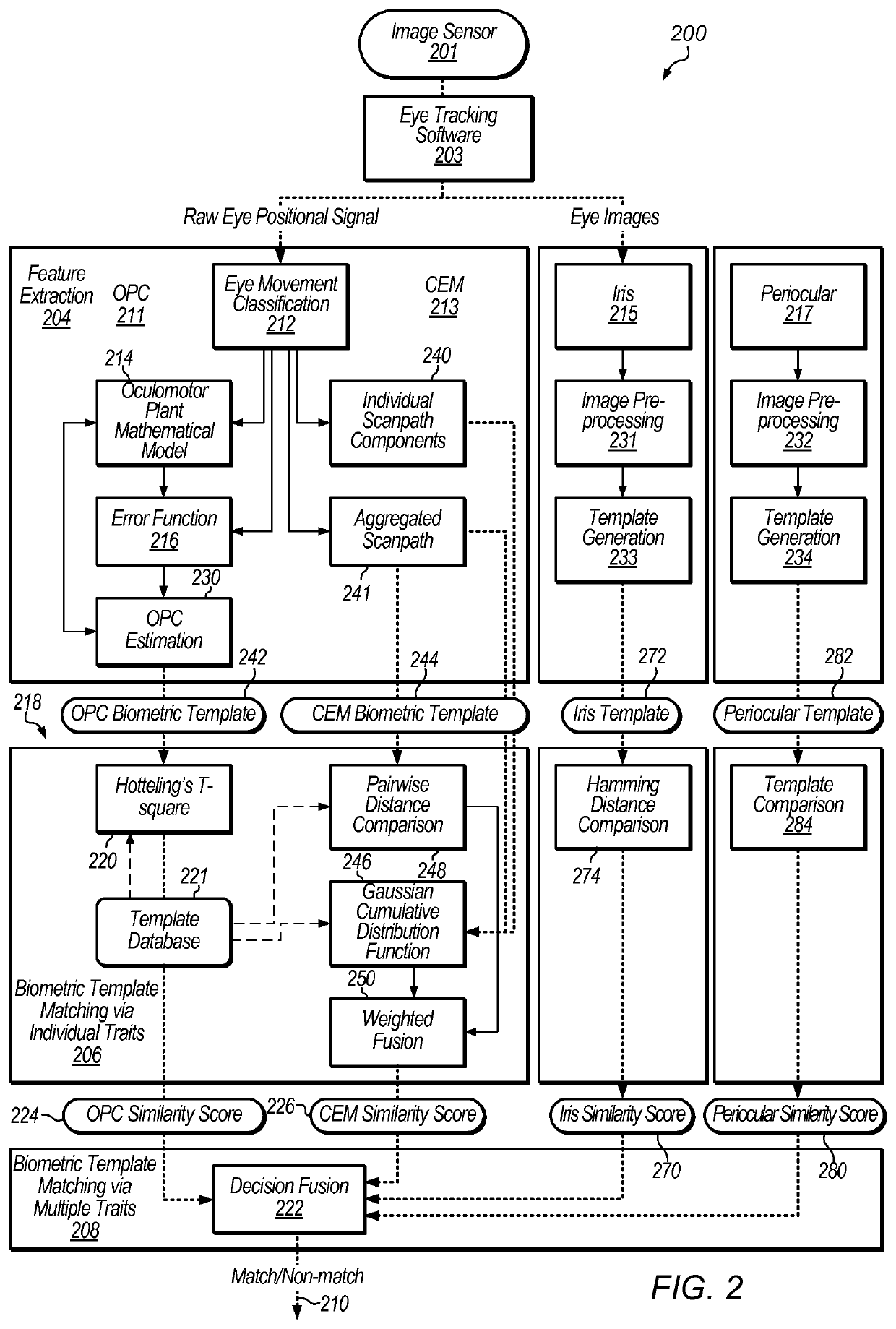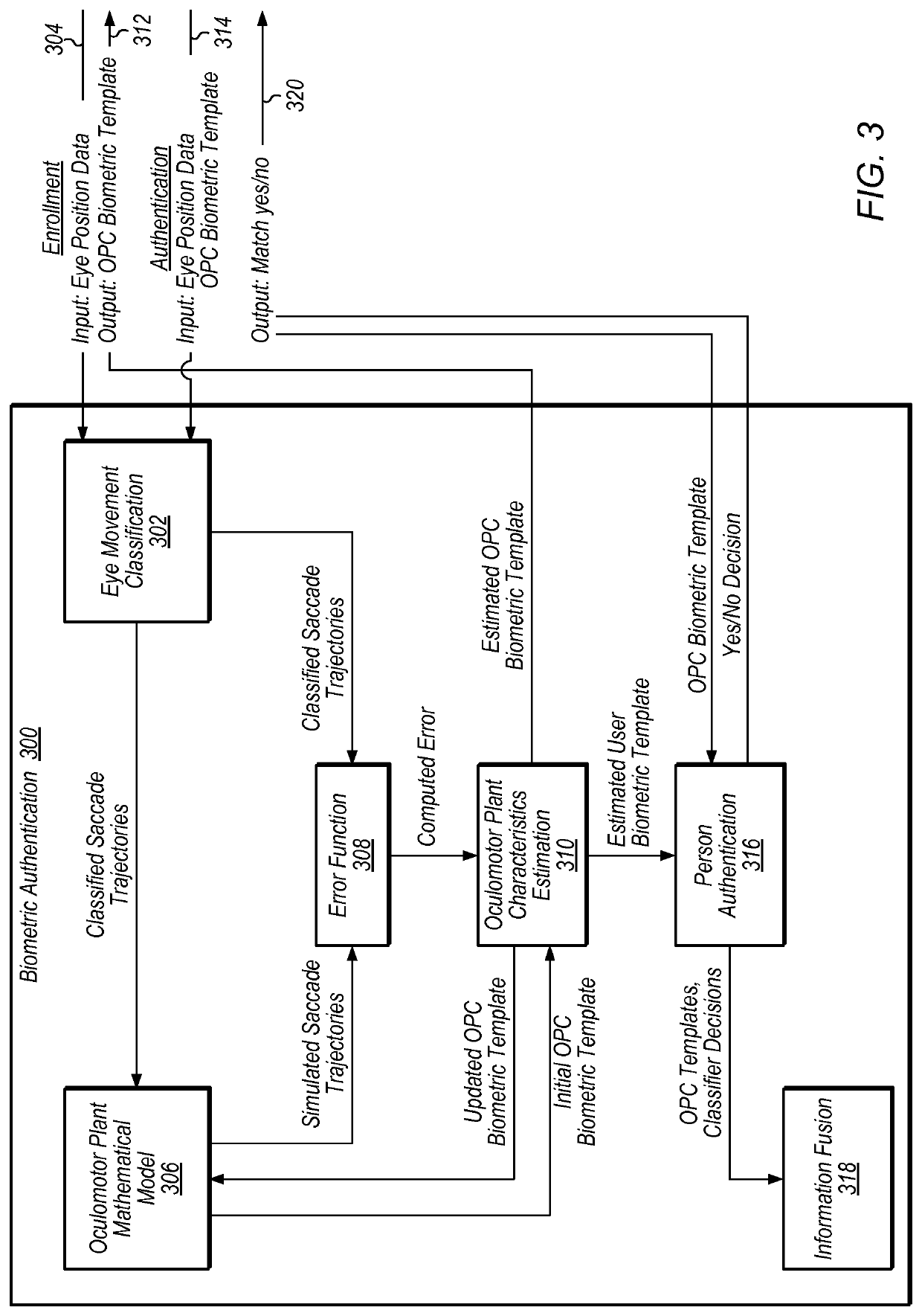Detection of print-based spoofing attacks
a technology of spoofing attacks and detection methods, applied in the field of methods, can solve problems such as security, accuracy, and security weaknesses of password verification, and many commonly used methods for identity determination
- Summary
- Abstract
- Description
- Claims
- Application Information
AI Technical Summary
Benefits of technology
Problems solved by technology
Method used
Image
Examples
Embodiment Construction
[0040]As used herein, “oculomotor plant” means the eye globe and its surrounding tissues, ligaments, and extraocular muscles (EOMs), each of which may contain thin and thick filaments, tendon-like components, various tissues and liquids.
[0041]As used herein, “scanpath” means a spatial path formed by a sequence of fixations and saccades. Fixations occur when the eye is held in a relatively stable position, allowing heightened visual acuity on an object of interest. Saccades may occur when the eye rotates quickly, for example, between points of fixation, with almost no visual acuity maintained during rotation. Velocities during saccades may reach as high as 700° per second.
[0042]As used herein, “brain control strategies” are defined as an ability of the brain to guide the eye to gather the information from the surrounding world. Strategies may be based on, or include, information on how and where the eye is guided. Brain control strategies can manifest themselves in the spatial and te...
PUM
 Login to View More
Login to View More Abstract
Description
Claims
Application Information
 Login to View More
Login to View More - R&D
- Intellectual Property
- Life Sciences
- Materials
- Tech Scout
- Unparalleled Data Quality
- Higher Quality Content
- 60% Fewer Hallucinations
Browse by: Latest US Patents, China's latest patents, Technical Efficacy Thesaurus, Application Domain, Technology Topic, Popular Technical Reports.
© 2025 PatSnap. All rights reserved.Legal|Privacy policy|Modern Slavery Act Transparency Statement|Sitemap|About US| Contact US: help@patsnap.com



